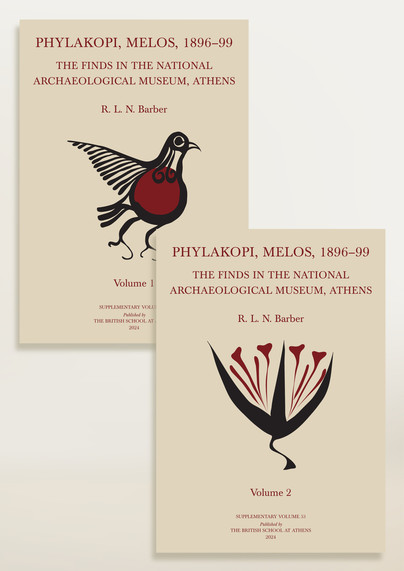

British School at Athens
Since its foundation in 1886, the British School at Athens has been involved in some of the most important archaeological projects conducted in Greece and Cyprus. Although most early scholars concentrated on Classical themes, the School has always had a wide remit, and now prides itself on being a centre for research in all the humanities as related to Greece, as well as the field of archaeological science. The School publishes three series, a Supplementary Series reporting on fieldwork projects, Archaeological Monographs describing particular research projects or the proceedings of conferences, and Fitch Laboratory Occasional Papers describing the scientific work of the Fitch Laboratory, as well as a yearly journal, the Annual of the BSA.

Format: Hardback
Pages: 991
ISBN: 9780904887754
Pub Date: 13 Jun 2024
Imprint: British School at Athens
Series: BSA Supplementary Volume
Illustrations: 285 figures; 78pp half-tones; 30pp colour; colour plans inside cover
Description:
The site of Phylakopi on Melos occupies a special place in the prehistory of the Aegean Bronze Age. The first work there by the British School at Athens in 1896–99 (there were two further campaigns, in 1911 and 1974–77) was memorably described by Carl Blegen as ‘the first really serious effort to understand stratification, the first really good excavation in Greece’. The Field Director, Duncan Mackenzie, kept detailed day-to-day records of the work, later applying methods developed on Melos to the excavation of Knossos.

Format: Hardback
Pages: 238
ISBN: 9780904887747
Pub Date: 31 Jan 2023
Imprint: British School at Athens
Series: BSA Supplementary Volume
Illustrations: 51 line-drawings; 8 tables; 23 half-tone plates; 2 colour plates; 1 pocket-plan
Description:
This volume presents the pottery from a series of deposits excavated by Sir Arthur Evans in the palace at Knossos and assigned by him to the last part of the Middle Bronze Age or Middle Minoan III. The substantial architectural modifications seen in this period are examined along with stratigraphy to give proper context to the pottery deposits. Middle Minoan III was the time when Knossos appeared to expand its reach across Crete: from the First Palace Period, when palaces at Malia and Phaistos rivalled Knossos, to the Second Palace Period, when seemingly they diminished and other smaller palaces were built.
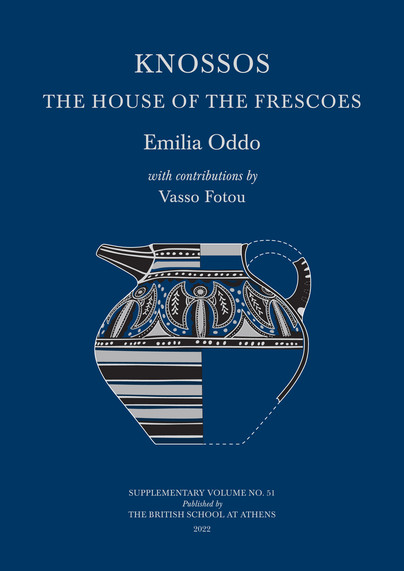
Format: Hardback
Pages: 352
ISBN: 9780904887730
Pub Date: 05 Jun 2022
Imprint: British School at Athens
Series: BSA Supplementary Volume
Illustrations: 62 line-drawings; 20 tables; 13 colour plans; 3 colour pocket-plans; 18 colour plates; 5 half-tone plates
Description:
This volume presents a complete study of the architecture and finds from the House of the Frescoes at Knossos, a Neopalatial building uncovered by Sir Arthur Evans and Duncan Mackenzie in 1923 and 1926. Located in a prominent position, a few meters south of the Royal Road and close to both the Theatral Area and the north-west corner of the Palace, the House of the Frescoes owes its name to the large deposit of painted plaster discovered within its ruins. Reinvestigation of the House took place in 2016–2019 and included: on-site cleaning of the remains in 2018; detailed analysis of the pottery and other finds; and study of archival material from the original excavations (excerpts presented in this volume).
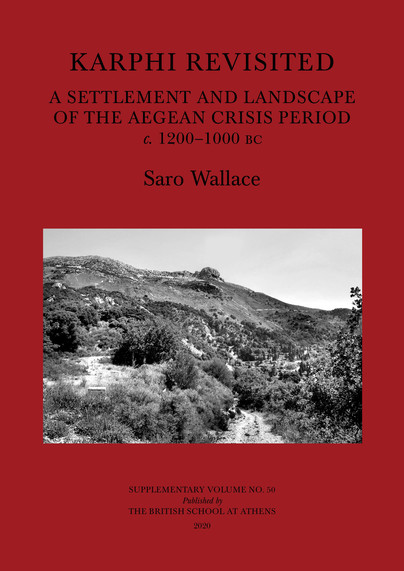
Format: Hardback
Pages: 418
ISBN: 9780904887723
Pub Date: 15 Nov 2020
Imprint: British School at Athens
Series: BSA Supplementary Volume
Illustrations: 80 half-tone plates; 4 colour plates; 91 line-drawings; 68 tables; 47 charts
Description:
The site of Karphi, situated in the Lasithi mountains of eastern Crete and occupied from c. 1200-1000 bc, provides a rare example of a large-scale creative response to the economic and political crisis that swept the Mediterranean c. 1200 bc.

Format: Hardback
Pages: 650
ISBN: 9780904887716
Pub Date: 01 Feb 2020
Imprint: British School at Athens
Series: BSA Supplementary Volume
Illustrations: 310
Description:
The signs known as ‘masons’ marks’ were carved on blocks of stone in Bronze Age Crete over a period of some 500 years from around 2000 BC until the middle of the 15th century bc. The earliest examples seem to occur at Knossos, dating from the time when the so-called Early Palace was constructed there. Soon thereafter blocks with comparable signs were incorporated in the palatial centres at Phaistos and Malia.

Format: Hardback
Pages: 614
ISBN: 9780904887709
Pub Date: 30 Apr 2019
Imprint: British School at Athens
Series: BSA Supplementary Volume
Illustrations: 325
Description:
Erected in the aftermath of the earthquake and tsunami that devastated Crete’s coastal cities during the Thera eruption, Building 1, with its two-storeyed ashlar façades, must have been one of the finest at Palaikastro. Two conflagrations during the LM IB period largely obscured its original function and brought down much of the ashlar masonry. This was re-used in the substantial LM II and LM IIIA re-occupation phases, which ended with the widespread, perhaps natural, destruction that affected the entire town.

Format: Hardback
Pages: 133
ISBN: 9780904887693
Pub Date: 31 Dec 2014
Imprint: British School at Athens
Series: BSA Studies
Description:
From at least 1700 BC, and for several centuries thereafter, a city of substantial houses flanked the palace of Knossos in north-central Crete. Those immediately adjacent to it, like the Royal Villa or the South House, excavated by Sir Arthur Evans, are well known, as are the Little Palace and Unexplored Mansion to the north-west. In fact the whole lower western hill-slope (Bougadha Metochi, the modern village) was terraced with fine, ashlar masonry buildings, served by well-engineered paved roads.

Format: Hardback
Pages: 125
ISBN: 9780904887686
Pub Date: 22 May 2013
Imprint: British School at Athens
Series: BSA Studies
Description:
The archaeological sites on the Monastiriako Kephali hill analysed in this volume include the earliest known mortuary activity at the key Minoan centre of Knossos on the island of Crete. Two Bronze Age sites are presented, known as the ‘Tomb’ and the ‘Deposit’, originally excavated in the 1930s but until now never published in detail.The ‘Tomb’ represents the earliest known funerary site at Bronze Age Knossos, established in the late Prepalatial period and continuing in use until the Neopalatial.

Format: Hardback
Pages: 227
ISBN: 9780904887679
Pub Date: 25 Feb 2013
Imprint: British School at Athens
Series: BSA Studies
Description:
The Middle Minoan III period on Crete was initially identified and studied in detail at Knossos by Sir Arthur Evans. Subsequent scholarly attention focused on the preceding Old Palace period and the apparent floruit of the New Palaces at the beginning of the Late Bronze Age. In consequence one of the critical transitions in Minoan culture has been virtually overlooked, giving rise to confused and ill-informed judgements concerning developments in Crete and further afield.

Format: Hardback
Pages: 382
ISBN: 9780904887662
Pub Date: 28 Aug 2012
Imprint: British School at Athens
Series: BSA Studies
Illustrations: b/w illus
Description:
How do the cultures of Crete and Cyprus, the two great islands of the eastern Mediterranean, compare in their history and development from the 3rd millennium to the 1st millennium BC? What was similar and what was different in their social and political, economic and technological, and religious and mortuary practices and behaviours, and in the natural settings and choices of places for settlements? Why, and how, did convergences and divergences come about?
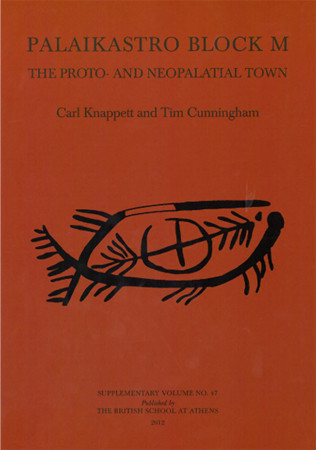
Format: Hardback
Pages: 338
ISBN: 9780904887655
Pub Date: 30 Apr 2012
Imprint: British School at Athens
Series: BSA Supplementary Volume
Description:
Block M is a substantial architectural complex comprising three large buildings at the heart of the Minoan town of Palaikastro. With traces of activity stretching back to the Prepalatial period, and occupation in the Protopalatial period, Block M sees its most intensive use in the Neopalatial period, in the 17th century BC. This period sees widespread construction, followed by two severe destruction horizons: the first seismic, the second associated with the Theran eruption, by which time the Block may already have been in ruins.
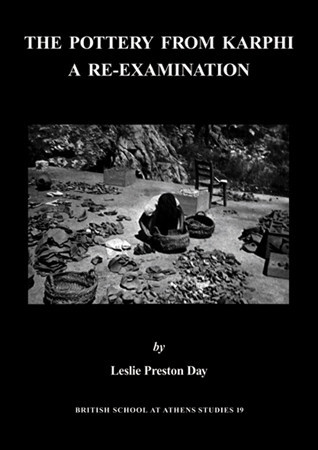
Format: Hardback
Pages: 392
ISBN: 9780904887631
Pub Date: 03 Oct 2011
Imprint: British School at Athens
Series: BSA Studies
Description:
The site of Karphi, high above the Lasithi plateau, remains one of the most extensively investigated settlements of Early Iron Age Greece; it was excavated by the British School at Athens under the direction of John Pendlebury in 1937-39. In the report that swiftly followed the pottery was not presented in detail, though much was discussed in a later article by Mercy Seiradaki. Consequently there existed serious problems in dating the remains and understanding their meaning.
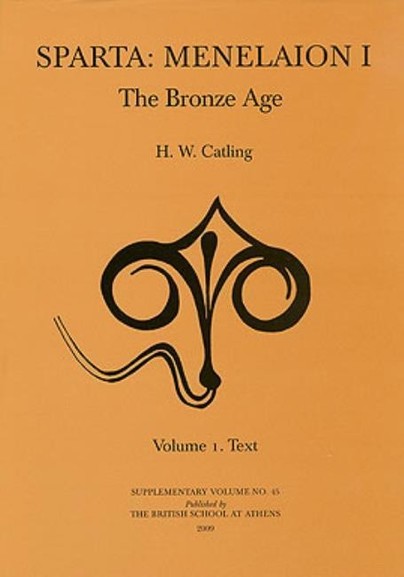
Format: Hardback
Pages: 890
ISBN: 9780904887594
Pub Date: 22 Jul 2009
Imprint: British School at Athens
Series: BSA Supplementary Volume
Description:
This is the account of an excavation by the British School at Athens at the major Mycenaean settlement in the central Eurotas valley of Laconia, close to the site of ancient and modern Sparta, in the south-central Peloponnese. The site was first identified and partly explored by the British School (under its sixth Director, R. M.

Format: Hardback
Pages: 204
ISBN: 9780904887532
Pub Date: 01 Dec 2007
Imprint: British School at Athens
Series: BSA Supplementary Volume
Description:
The crucial earliest phases of palatial Knossos are not well known, in part due to over-building by neopalatial structures and floors. This volume represents the first complete publication of substantial deposits dating to this period, specifically the Middle Minoan IB and IIA phases. This is a first not only for Knossos but for Crete as a whole, and will act as a crucial point of reference for future work on these key phases in the islands prehistory.

Format: Hardback
Pages: 222
ISBN: 9780904887488
Pub Date: 01 Dec 2005
Imprint: British School at Athens
Series: BSA Supplementary Volume
Illustrations: b/w figs and pks
Description:
In 1999 a collection of documents were found in the archives of the Italian Institute of Human Palaeontology belonging to Luigi Cardini, one of the founders of the Institute. These documents included site notebooks, photographs, drawings and maps relating to work carried out in Albania from 1930-39 where he was sent on a governmental mission to `reinforce Italian supremacy in Albania through archaeological research'. This monograph publishes extracts from these notebooks within a historical, political and archaeological context.

Format: Hardback
Pages: 208
ISBN: 9780904887464
Pub Date: 01 Dec 2004
Imprint: British School at Athens
Series: BSA Studies
Illustrations: 90 illus, 7 in col, 10 tabs
Description:
The volume contains fifteen papers. Ten of them record the genesis and the development of archaeological survey in Cyprus; they also discuss the reasons why the twentieth century ended with serious set-backs in the protection of cultural landscapes, despite the fact that in Cyprus survey was conducted in the name of archaeological resource management as early as 1955. The credit for this accomplishment goes to Hector Catling, who had envisioned the island-wide Cyprus Survey Project, and was instrumental in establishing the Survey Branch in the Cyprus Department of Antiquities.
